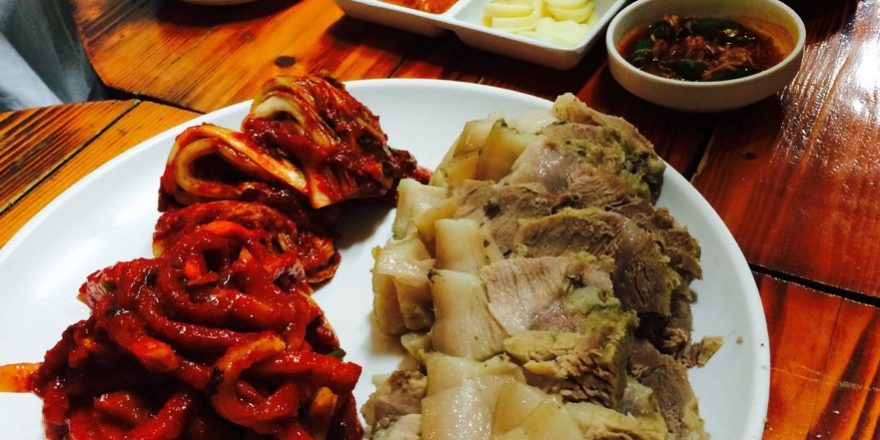Bossam, one of Korea’s popular pork dishes, is nothing short of a feast for many. Bossam, or boiled pork, is usually served with slated napa cabbage leaves, radish salad, and salted shrimp. If the mood strikes, oysters are included in this Korean dish and bossam is then called gul-bossam.
The process requires attention to detail, with the pork cuts requiring that they are boiled in a special broth consisting of onion, scallions, garlic, ginger, black peppers, doenjang, salt, bay leaves, water and instant coffee – yes, instant coffee. Imagine that aroma.
Bossam is also one of those anju dishes in the Korean cuisine, historically a form of payment and feast for workers during the gimjang season, a kimchi-production season for the country aimed at making enough kimchi for the cold, unforgiving winter. The yangban, the cultured and educated scholars from Korea’s nobility during the Joseon period, would usually provide the pig as thanks to the workers as well as they make sure that the kimchi work would continue regardless how labor-intensive the process is.
Fun fact: the gimjang tradition was inscribed at the UNESCO Intangible Cultural Heritage list in December 2013, making kimchi making and preservation an important cultural memory not only in Korea but also in the world.
*photo taken by Grey Jang, This is KOREA







